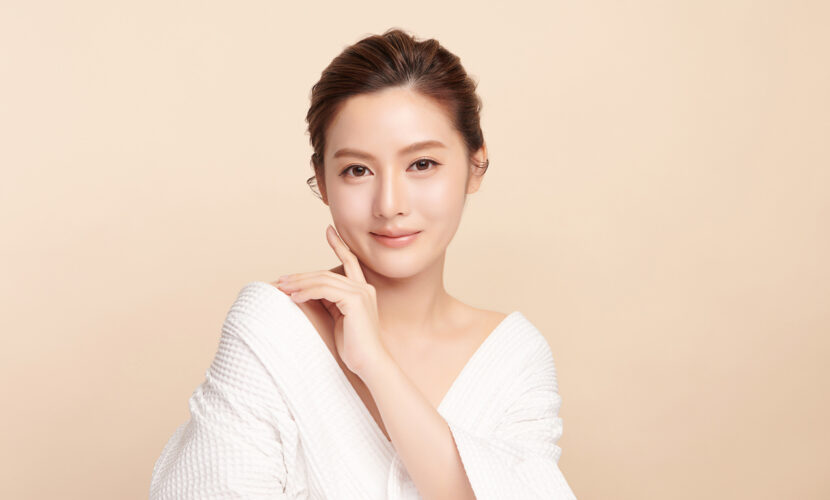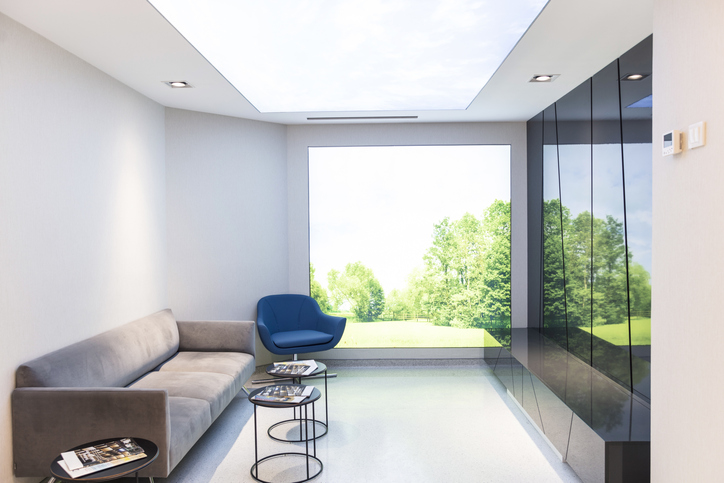Thread lifts are gaining attention as a noninvasive yet effective means of rejuvenation. However, the question of how many threads are actually needed and how to choose the right one to achieve the ideal facial appearance is a question that plagues many people. Here, we will explain in detail the information you need to know, from the basics of thread lifts to how to choose the number of threads needed to achieve ideal results.

Graduated from the Faculty of Medicine, National Kumamoto University. After serving as the director of major beauty clinics in Japan, etc., he opened Aladdin Aesthetic Clinic in 2023. He is a professional in aesthetic medicine with a doctorate in anti-aging research and many years of experience. With the motto of "Toward the realization of cosmetic medicine without lies," he aims to be the "Only One" together with his patients.
What is a Thread Lift? The first step to your ideal face

Thread lift is one of the latest cosmetic medical techniques that does not involve incisions, and is a procedure that restores firmness and youthfulness to skin that has begun to sag. In this procedure, special threads are inserted into the skin and lifted to tighten and rejuvenate facial contours.
History and Modern Role of Thread Lift
The thread lift was first performed by Russian physicians in the 1990s, and after FDA approval in Europe and the United States in the early 2000s, the procedure became popular in earnest and has undergone many evolutions around the world. Beginning with the earliest techniques, more advanced and safer methods are now being developed.
In modern aesthetic medicine, thread lifts use an increasingly diverse range of threads, each with its own unique characteristics and effects. The latest trend is to use dissolvable (absorbable) threads to pursue a lifting effect while enhancing safety. Below is a detailed description of the types of dissolvable threads that are becoming mainstream and their characteristics.
Dissolvable threads (absorbable)
|
|
|
Dissolvable threads (non-absorbable)
Dissolvable threads provide a long-lasting lifting effect by staying permanently in the body. However, they are used sparingly because of the increased risk of complications.
- PP (polypropylene): Has a strong lifting effect, but is prone to discomfort due to its low elasticity. Major products include Silhouette Lift, Aptos (non-melting type), and Miracle Lift.
- PEs (polyester) and silicone: Threads using silicone for coating, which are flexible and maintain a natural look. Spring threads are typical products.
- Gold: These ultra-fine threads are made of pure gold and have a very low risk of allergic reactions. However, there is a possibility that you may not be able to undergo certain cosmetic procedures after the procedure.
Thread lift with or without spikes
The presence or absence of spikes greatly affects the effectiveness of a thread lift. Threads with spikes (cogs or cones) achieve a more powerful lifting effect because the spikes firmly grip the subcutaneous tissue. On the other hand, threads without spikes provide a lifting effect by stimulating collagen production in the body after being implanted under the skin.
The advantage of spiked threads is their powerful lifting effect. The spikes firmly grip the subcutaneous tissue, resulting in a noticeable lifting effect. In addition, the lifting effect can often be seen immediately after the procedure.
Conversely, the advantage of spikeless threads is that they provide a natural lifting effect by stimulating collagen production over time. In addition, the effects of collagen production appear gradually over time and long-term improvement can be expected.
A well-known example of a typical spikeless thread procedure is the shopping lift. In this procedure, dozens of ultra-fine threads are implanted into the subcutaneous tissue using a special needle, and the stimulation by the threads stimulates collagen production. Natural lifting and improvement of skin texture can be expected.
However, spageless threads are not the only type of threads that produce collagen, and the difference between the two is whether they have an immediate effect on contour line changes. Since the effect, duration, and level of risk after the procedure vary depending on the type of threads you choose, it is important to consult with your doctor before undergoing the procedure and select the threads that best suit your skin condition and the effect you are aiming for.
Why are thread lifts so popular? Rejuvenate and regain confidence!

A thread lift is a procedure that improves sagging skin and wrinkles caused by aging and tightens facial contours to restore a youthful appearance. The reason why this procedure is necessary lies in the aging process our skin experiences and how we respond to it. In addition to aging, the improved appearance of a thread lift can also contribute significantly to improved self-confidence.
As we age, our skin experiences several noticeable changes. First, the production of collagen and elastin, the primary components that support the skin and maintain its elasticity, decreases. As a result, the skin gradually loses its firmness and begins to sag and wrinkle. In addition, the distribution of facial fat changes with age. Fat that once gave the face a youthful appearance moves to areas more sensitive to gravity, and sagging skin becomes more pronounced.
In addition, the skin's natural ability to regenerate itself cannot be ignored. When we were young, we recovered relatively quickly from minor wounds and damage, but as we age, this recovery process slows down. This is due to the reduced ability of skin cells to produce new cells, resulting in accelerated skin aging.
These changes can be a clear sign of aging in appearance and, for many people, can lead to decreased self-confidence and self-esteem issues. However, modern cosmetic medical technology offers ways to address these issues. Procedures such as thread lifts, for example, can effectively address these age-related changes and help restore youthfulness by improving sagging skin and wrinkles.
Thread lift is not only a countermeasure against facial sagging and wrinkles caused by aging. In this procedure, special threads are inserted inside the skin and lifted directly up, tightening the facial contours and achieving the ideal contour lines for a beautiful face. The result of the procedure is a well-defined contour and a youthful appearance.
In addition, the thread lift process provides microstimulation within the skin, which stimulates new collagen production. Collagen is an important component of skin elasticity and firmness, and the stimulation of its production leads to a natural anti-aging effect.
Another major advantage of the thread lift is its immediate effect and low downtime. After the procedure, the effects are almost immediate, with minimal swelling and pain, allowing patients to return to their daily activities on the same day they receive the lift.
This allows even today's busy people to undergo this rejuvenation procedure with ease. These benefits provided by a thread lift not only improve appearance, but also contribute to an individual's self-confidence and quality of life.
How do I determine how many thread lifts I need? Should I have more or less?

To maximize the effect of a thread lift, it is very important to determine the appropriate number of threads depending on the area to be treated, the individual's skin condition, age, and the desired effect. Here are some pointers on determining the number of threads needed for a thread lift.
Approximate number of units by treatment area
The number of threads for a thread lift varies greatly depending on the area to be treated. For example, a relatively small number of threads can be used to improve fine lines and sagging around the eyes, but more threads may be needed to lift lines and tighten facial lines.
Generally, three or more are needed on each side to improve lines and three or more are needed to tighten facial lines, but it depends on the individual and his/her ideal image, so we recommend a detailed examination during the consultation.
The size and shape of the face also affects the number of threads needed. For those with a large facial area or who desire a lift in a specific area, more threads are used to achieve the desired effect.
Relationship between age, skin condition, and desired effect
When determining the number of thread lifts, it is important to consider your age, skin condition, and the overall effect you are seeking. If you have a specific goal of regaining a youthful appearance or improving sagging or wrinkling in a particular area, the number of units should be adjusted accordingly. Generally, a greater number of units is recommended for older patients and for those with more pronounced sagging skin, but this cannot be considered absolute, as there are individual differences.
Risks and Precautions for Thread Lift

Thread lift is a popular non-invasive cosmetic procedure to restore a youthful appearance, but as with any medical procedure, it also carries risks and potential complications. It is very important to understand these risks and post-procedure considerations before undergoing the procedure. Here we will discuss in detail the possible risks and complications associated with a thread lift and the precautions to take after the procedure.
Swelling and redness
Immediately after the procedure, the insertion site may become red and mild swelling may occur. This is generally temporary and often resolves spontaneously within a few days.
Risk of infection
Although very rare, infection can occur during insertion of the threads. The hygiene of the clinic where the procedure is performed and proper care after the procedure are very important.
Thread migration and protrusion
When properly performed, this risk is very low, but there is a possibility that the threads may migrate or penetrate the skin. To prevent this, the procedure must be performed accurately by an experienced physician.
Unnatural facial expressions and uneven lifting
If the procedure is performed improperly, the lifted skin may look unnatural or asymmetrical. To avoid this, it is important to fully understand the treatment plan and share the expected results with the doctor during the preliminary consultation.
Post-treatment precautions
After the procedure, it is recommended to avoid excessive exercise, heavy lifting, and violent facial expressions, especially for the first day to 48 hours. It is also important to keep the treated area clean and follow the doctor's instructions for proper aftercare.
Other regular follow-up visits with the physician are recommended to monitor progress after the procedure. This will ensure that any unforeseen complications or defects are addressed promptly.
summary
Thread lifts can achieve amazingly rejuvenating results, depending on the number and quality of the procedure. As discussed in this article, selecting the appropriate number of threads, post-procedure care, and understanding the risks are keys to success. If you are considering a thread lift, this article will help you to plan according to your own requirements and to work with a trusted specialist to achieve safer and more satisfying results.
At Aladdin Aesthetic Clinic, based on our many years of experience in cosmetic medicine and cosmetic dermatology and the knowledge of our doctoral degree, we provide counseling that aims to be "only one", offering the best treatment for each person we meet. We offer only the necessary treatments without any unnecessary information or suggestions.
Feel free to use our official LINE account for 24-hour counseling and reservations. Please feel free to contact us for free counseling for the first time or if you have any concerns.





